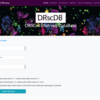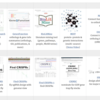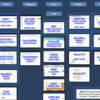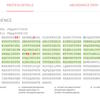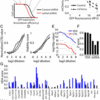Yanhui Hu, Sudhir Gopal Tattikota, Yifang Liu, Aram Comjean, Yue Gao, Corey Forman, Grace Kim, Jonathan Rodiger, Irene Papatheodorou, Gilberto Dos Santos, Stephanie E Mohr, and Norbert Perrimon. 2021. “DRscDB: A single-cell RNA-seq resource for data mining and data comparison across species.” Comput Struct Biotechnol J, 19, Pp. 2018-2026.Abstract
With the advent of single-cell RNA sequencing (scRNA-seq) technologies, there has been a spike in studies involving scRNA-seq of several tissues across diverse species including Drosophila. Although a few databases exist for users to query genes of interest within the scRNA-seq studies, search tools that enable users to find orthologous genes and their cell type-specific expression patterns across species are limited. Here, we built a new search database, DRscDB (https://www.flyrnai.org/tools/single_cell/web/), to address this need. DRscDB serves as a comprehensive repository for published scRNA-seq datasets for Drosophila and relevant datasets from human and other model organisms. DRscDB is based on manual curation of Drosophila scRNA-seq studies of various tissue types and their corresponding analogous tissues in vertebrates including zebrafish, mouse, and human. Of note, our search database provides most of the literature-derived marker genes, thus preserving the original analysis of the published scRNA-seq datasets. Finally, DRscDB serves as a web-based user interface that allows users to mine gene expression data from scRNA-seq studies and perform cell cluster enrichment analyses pertaining to various scRNA-seq studies, both within and across species.

